"I have had a policy of going to places where there's no queue," says Brian Maguire. "Prisons, Damascus and so on . . ."
The artist has pulled into the side of the road outside of El Paso, Texas for our phone call, but his words come through crystal clear. He has a softly-spoken, gravelly voice that sounds like its owner has seen a lot. I know that it can become intense and even angry when there’s a cause, but, in this case, what I’m hearing is compassion.
Maguire is in El Paso to discuss a forthcoming exhibition, but we're talking about South Sudan. At the invitation of the aid agency, Concern, Maguire travelled to a refugee camp in Bentiu – called a Protection of Civilian (PoC) camp – to make a series of remarkable paintings, as well as individual portraits of the people he met there.
The story of South Sudan is particularly heartbreaking. We had our civil war too, but it's heartbreaking to see 120,000 people corralled into a tiny space. They're held in limbo
The results are a set of immediate, fresh sketches, giving faces and names to a crisis so vast its sufferers have been rendered anonymous by scale. Since the civil war erupted in South Sudan, more than 50,000 people have been killed and more than 2.2 million driven from their homes. Where do you start with a subject like this and, just as critically, why?
Making atrocity visible through art has a strong lineage, perhaps its most stark and compelling example being Francisco Goya's Disasters of War series, made in the early 1800s. One is titled simply Yo lo vi (I saw this). In our era of "alternative facts", bearing witness, marking and naming are more vital than ever. Maguire's own focus on those places without queues has its own lineage too. He spent 20 years teaching in Irish prisons and, more recently, his exhibition War Changes Its Address laid bare the devastation of the Syrian city of Aleppo.
“The story of South Sudan is particularly heartbreaking,” says Maguire. “We had our civil war too, revolutions are often followed by civil wars, but it’s heartbreaking to see 120,000 people who would, in the normal course of business, be herding cattle, be nomadic, be moving around, corralled into a tiny space. The effect that that has on young men and women’s lives, the way relationships are built, it can’t happen . . . They’re held in limbo.”
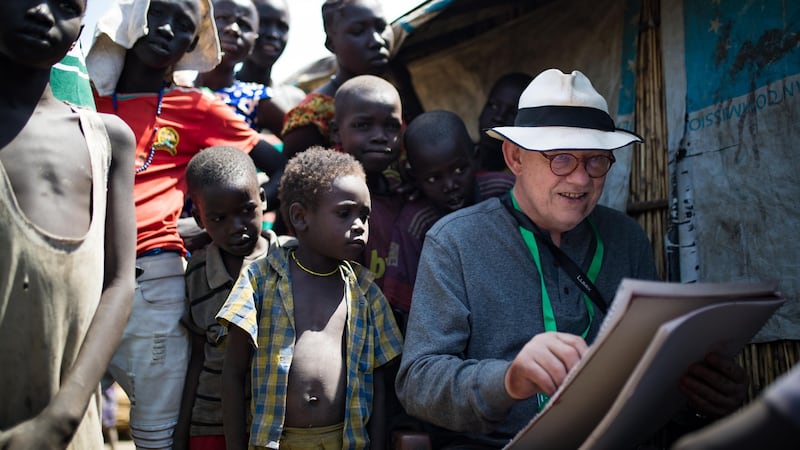
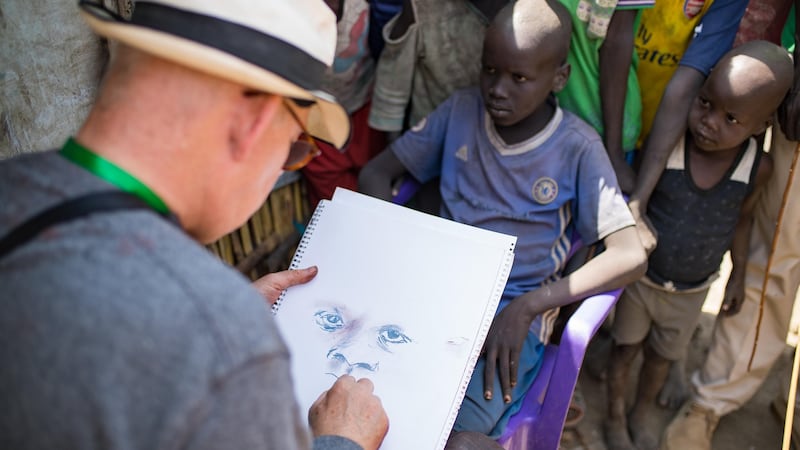
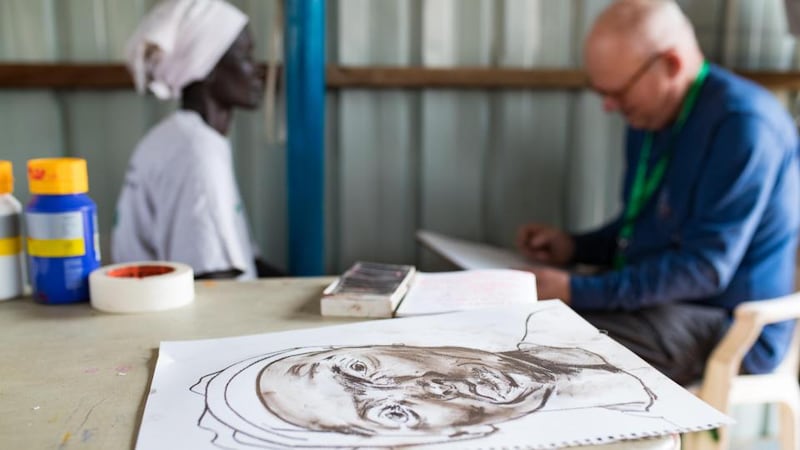
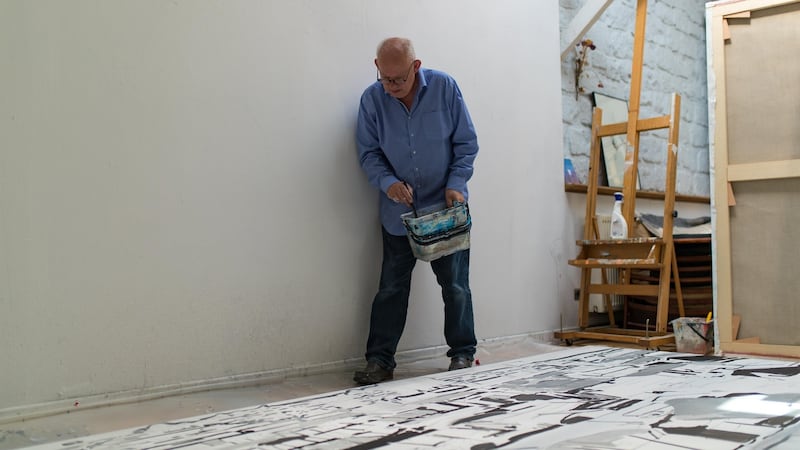
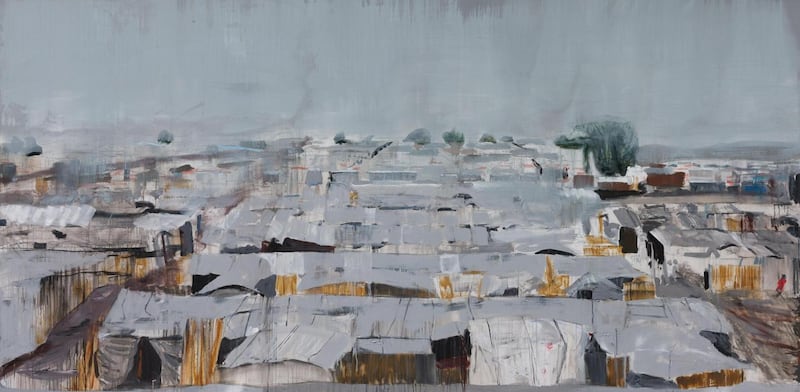
Colonial project
The artist stresses that he wasn’t there long enough to make judgments, but it’s also clear that the legacies of the European colonial project are still being tragically felt. He describes a trip to Liverpool to see Egon Schiele’s work, and finding a statue to Major General William Earle. “He died in Sudan in the 1800s, there’s a statue of him, the sword seems real. But he’s standing on top of an African shield.”
Maguire made his portraits to a system he established in São Paulo, Brazil: he makes two – one for the sitter, and one for him. “It’s trying not to take without giving,” he explains. He also held workshops with the children, “and even though the stories that the kids were telling often involved murder and robbery, they still told it in a child’s language, with bright colours. Kids are amazing. It was Picasso who said that his ambition was to draw like a child.”
Maguire is an absolutely extraordinary artist, able to reveal and elicit emotion through his use of paint, line, colour, light and shade. Three huge canvases show the camp itself.
“The first one was the usual: I represented what I saw, which was grey tents. In the second one, I took away the horizon, almost like a line drawing on a canvas. That enabled me to communicate the claustrophobic feel of the camp. You cannot see the people, there’s no room to see them.”
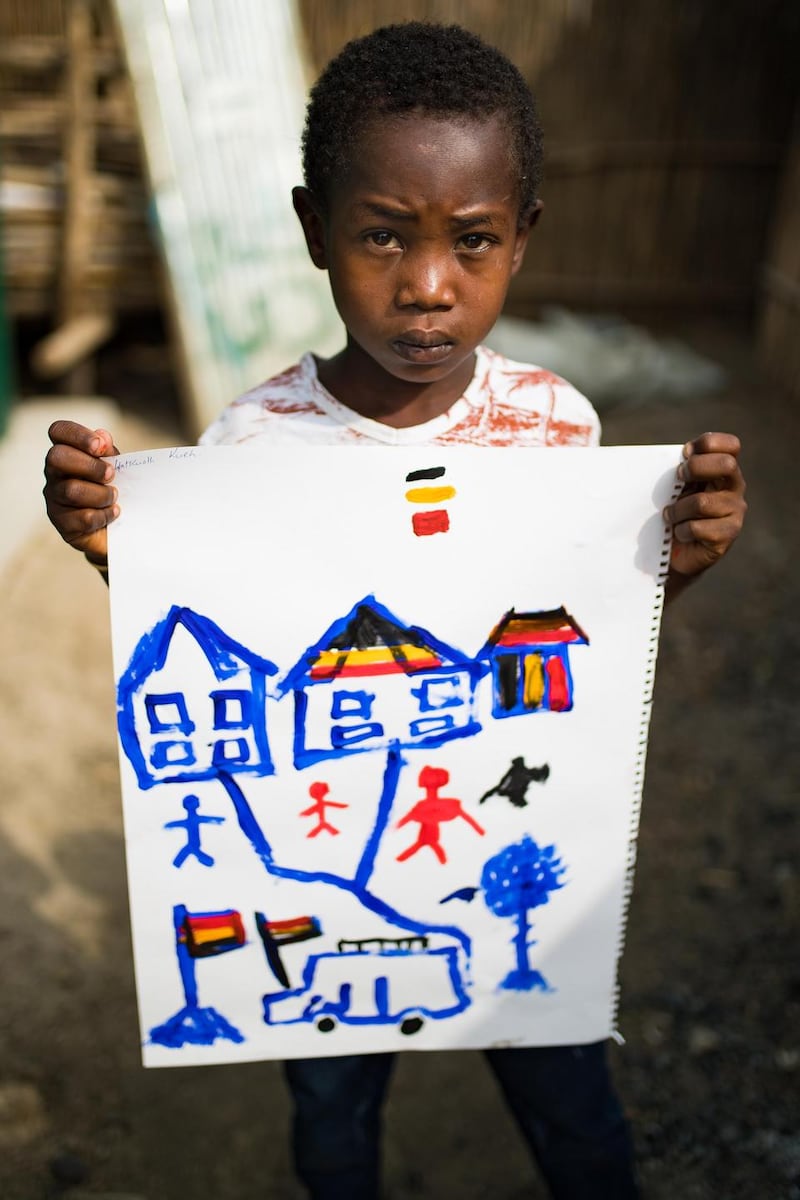
Spots of optimism
It’s hard not to feel despair in face of war, displacement, poverty and human tragedy on this scale, but perhaps a feature of what makes Maguire’s work so strong is that he can also recognise those spots of optimism.
“People are people everywhere,” he says. “We must be the most adaptable species, because we do adapt.”
He describes working with public health nurse and former Concern chairperson Frances O’Keeffe: “They translated their health information into a song-and-dance rhythm. That’s how they communicated it amongst the camp, and that’s a very joyful thing to see. To sing and dance is the best thing we can do. We don’t do it enough.”
Yes, that, and witness humanity, and to make it visible in art.
Humanity Site Unseen is at the Royal Hibernian Academy, Dublin, until September 11th. All proceeds from the sale of works go to Concern Worldwide; resurge2018.com/reception


















